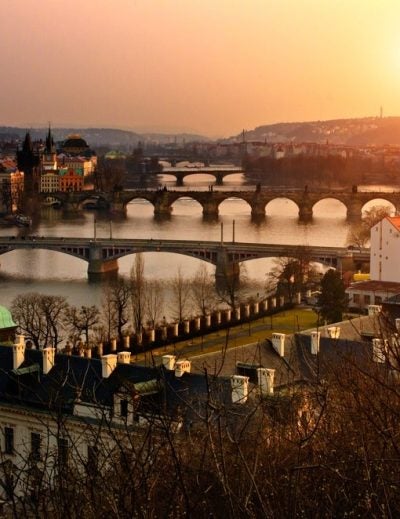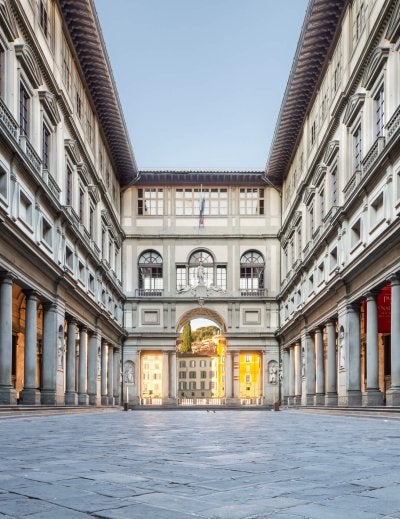
Boboli Gardens: Sculptures, Views, and Renaissance Charm
What are the Boboli Gardens?
The Boboli Gardens, or Giardino di Boboli, are among Florence’s most treasured historic parks. Located behind the grand Pitti Palace in the Oltrarno district, they offer an expansive example of Italian Renaissance garden design. Spanning around 45,000 square metres, the gardens serve as an open-air museum, adorned with sculptures, fountains, grottos, and architectural elements. Originally developed by the Medici family, the gardens have influenced many European royal gardens and are part of a UNESCO World Heritage Site.
A Brief History
The site was originally purchased by banker Luca Pitti in 1418, who went on to build the Pitti Palace. In 1549, the Medici family acquired the estate, with Eleonora di Toledo, wife of Cosimo I de’ Medici, spearheading the development of the gardens. Initially designed by Niccolò Pericoli (il Tribolo), the project was later continued by Vasari, Ammannati, and Buontalenti. Over centuries, the Medici, Lorraine, and Savoy dynasties expanded the gardens, which opened to the public in 1766.
Key Features and Attractions
The gardens are filled with highlights, including:
- The Amphitheatre: Built on the site of the original quarry for the Pitti Palace, this was designed for court events and performances.
- The Egyptian Obelisk: A 3,500-year-old obelisk from Luxor, accompanied by a Roman-era basin.
- Grottos: Notably the Grotta Grande by Buontalenti, a Mannerist masterpiece filled with sculpture and decoration.
- Fountain of Neptune: Nicknamed the “Fountain of the Pitchfork” due to Neptune’s trident, sculpted by Stoldo Lorenzi.
- Fountain of Bacchino: A whimsical statue of the Medici court dwarf Nano Morgante on a tortoise, turned into a fountain.
- Il Viottolone: A long, cypress-lined avenue leading to the Isolotto, lined with classical statues.
- Isolotto: A small island in a large pond featuring the Fountain of the Ocean by Giambologna.
- Kaffeehaus: A rococo-style pavilion used as a refreshment point.
- The Lemon House: Houses around 500 citrus plants and includes a labyrinthine garden.
- Knight’s Building and Rampart: A circular terrace and historic bastion with panoramic views.
You will also find various smaller fountains and statues scattered throughout, along with beautiful panoramic viewpoints over Florence.
Entrances
There are four main public entrances:
- Pitti Palace: The main and busiest entrance.
- Porta Romana: Quieter and convenient for drivers.
- Belvedere Fort: Offers scenic access and is less crowded.
- Via Romana (Annalena Entrance): Less busy but not suitable for wheelchairs.
It’s advisable to book tickets online in advance, particularly during peak seasons.
Planning Your Visit
- Opening Hours: Open daily from 8:15 AM. Closing times vary with the season, ranging from 4:30 PM in winter to 7:00 PM in summer.
- Closures: Shut on the first and last Monday of each month (except during summer), 1st January, 1st May, and 25th December.
- Ticket Options:
- Single ticket (Boboli Gardens and Bardini Garden)
- Combined ticket (Boboli Gardens and Pitti Palace)
- PassePartout ticket (includes Boboli, Pitti, Uffizi, and the National Archaeological Museum)
- Annual passes are also available.
- Children under 18 and persons with disabilities enter for free.
- Best Time to Visit: Spring and autumn offer ideal weather and beautiful scenery. Arrive early or late in the day to avoid crowds.
- Accessibility: The terrain is hilly and includes many steps, making it less suitable for those with mobility difficulties.
- What to Bring: Comfortable shoes, water, snacks, sun protection, and a camera.
- Restrooms: Available near the amphitheatre and at the top of the gardens.
Visiting with Children
The gardens are a family-friendly destination with open spaces for children to explore. Highlights include hidden pathways, statues, grottos, and the Lemon House garden. However, pushchairs may be challenging to use due to the terrain.
Getting There
From Florence’s historic centre, the gardens are about a 15-minute walk. Cross the Ponte Vecchio and continue along Via Guicciardini to the Pitti Palace. Buses (C3, C4, D, 11, 12, 13) also stop nearby. Santa Maria Novella train station is within walking distance. Parking is limited near the main entrance, but Porta Romana offers more convenient options.
Nearby Attractions
The Boboli Gardens are part of the Pitti Palace complex, which includes several museums. The Bardini Garden is also included with standard tickets. Other nearby sights include the Basilica of Santo Spirito, the Brancacci Chapel, and Piazzale Michelangelo. Florence’s main landmarks such as the Duomo and Uffizi Gallery are within a short walk.
Overall Experience
A visit to the Boboli Gardens is ideal for those seeking history, art, and tranquillity. The combination of scenic views, Renaissance architecture, and lush landscapes makes it one of the most enriching things to do in Florence. Plan enough time to explore and wear suitable shoes for the hills and gravel paths.



Leave a Reply
You must be logged in to post a comment.